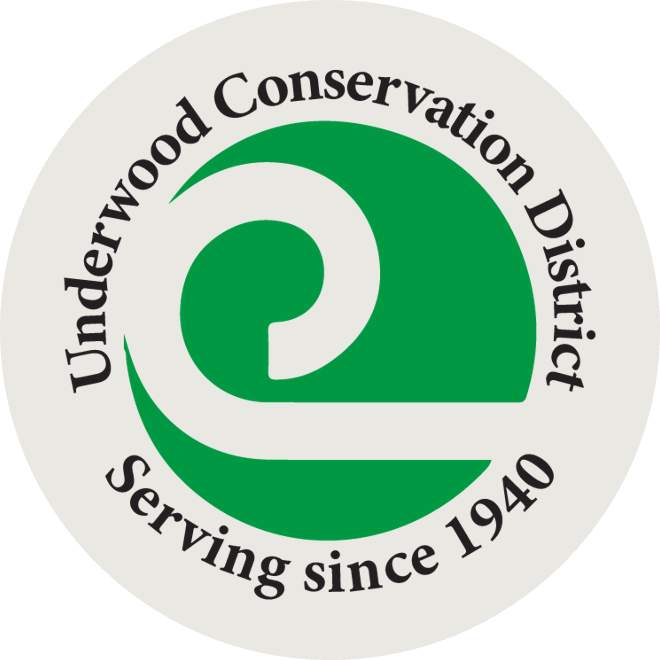The Wonder of Wetlands
By Heather Hendrixson, Hood River Soil and Water Conservation District
Swamps, bogs, marshes, mud puddles… they go by many names, but wetlands are an important feature of the landscape for many creatures, plants, and habitats. They are vital for overall watershed health, water quality and well-functioning hydrology. Perhaps you have a wetland on your property, or you notice them elsewhere throughout the Columbia Gorge.
Wetlands are areas that are saturated with water for at least part of the year and may be vegetated with trees, shrubs, grasses, sedges, moss, or sometimes invasive species like reed canarygrass (Phalaris arundinacea). They may form around the edges of lakes, rivers, and streams, in low spots, where groundwater comes to the surface via seeps, or during winter rains. Wetlands have soils that developed under wet conditions and naturally do not readily drain. Many wetlands exist throughout the Columbia Gorge, including along the Columbia River, hidden in wooded forests, or nestled among farmlands. With a little knowledge and a careful eye, you will start seeing them everywhere!
Wetlands provide valuable ecosystem services including:
· Providing flood storage and water supply - wetlands absorb and temporarily store stormwater and then slowly release the stored water back to the stream or groundwater, which is critical during low summer flows and drought years when water is needed most;
· Enhancing water quality - wetlands are highly effective at removing nitrogen and phosphorus, chemicals, metals, and other pollutants. Wetlands along streams and rivers and those that intercept field and road runoff are especially good at providing this service;
· Supplying food for entire food chains – this important service applies to microscopic organisms such as algae and bacteria, to invertebrates, fish, birds, and even humans;
· Creating habitat for fish and wildlife, including threatened species – almost all wildlife require a source of water, and wetlands provide a unique type of habitat that some animals, such as Sandhill Cranes and the Western pond turtle, depend on;
· and although most wetlands in the Gorge are small, they do provide recreation – residents and visitors can enjoy birdwatching, hunting, and fishing or just simply enjoy and learn about their remarkable features!
The most common types of wetlands in our area are forested wetlands, shrubby riparian wetlands, and wet meadows. Many are seasonally flooded by rivers and streams while others are hydrated by groundwater seepage or tributary streams. They can contain mixes of grasses, sedges, forbs, cattails, bulrushes, or be forested with water loving trees such as alder, cottonwood, and willows.
The health of Oregon and Washington’s wetlands is dependent on maintaining those that remain. While wetland loss has slowed, they are still disappearing. In the past, upland agricultural conversion was the main cause of decline, whereas the threat now is mainly due to urban and rural development.
If you are considering development or any other land use change on your property, be aware of what regulations may apply. In Washington, the Department of Ecology regulates wetlands, but county planning departments are the first point of contact for any project that may impact wetlands or other water bodies. You can also call Underwood Conservation District for a free, non-regulatory site visit and technical assistance (call 509-493-1936).
For property in Oregon, you can request a wetland determination from the Oregon Department of State Lands (DSL). This free service will let you know if wetlands are on your site and if further mapping and review by DSL is needed prior to any activities.
We all play a role in preserving our remaining wetlands through increasing our knowledge and understanding of them and the critical functions they provide. By supporting sensible, conscientious land use planning and stewardship, we can protect this important part of our landscape.
Conservation Districts are local, non-regulatory, public agencies charged with assisting landowners and residents with responsible natural resource management and stewardship. Underwood Conservation District in White Salmon, Hood River Soil and Water Conservation District in Hood River, and Wasco County Soil and Water Conservation District in The Dalles, are available to assist with a variety of natural resource issues, including soil health, water quality, fish habitat, wildfire risk, forest management, noxious weeds, pollinators, wildlife, livestock and agriculture.
Photo by Brian Hanson, via Unsplash
